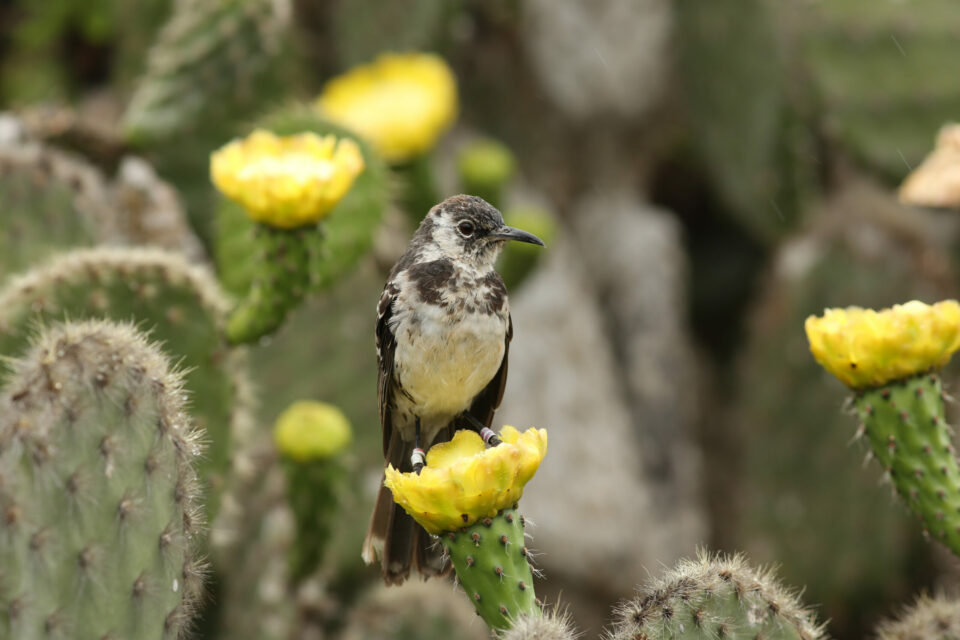

5 of the most colourful birds in Galapagos
Visitors to Galapagos are sometimes surprised to discover the relative lack of colourful bird plumage on display, given the Islands’ location on the Equator.
Compared to the cloud forests of Costa Rica or the jungles of Borneo and Papua New Guinea, it is true that brightly coloured birds are in short supply. Although oceanic islands such as Galapagos tend to be home to an exceptionally large proportion of endemic species of flora and fauna, they are also low in species diversity, since most species present will be descended from those few species that made it here from the mainland.
Many of the Islands’ most famous endemic landbird species, such as Darwin’s finches or the four species of mockingbird, are dull in colour, falling into the category sometimes referred to by birding enthusiasts as LBJs – ‘little brown jobs’. Here at GCT we have a lot of love for these birds – check out our projects to save the Floreana mockingbird and the mangrove finch!
However, there are a handful of more colourful species, including one in particular that needs our urgent help…
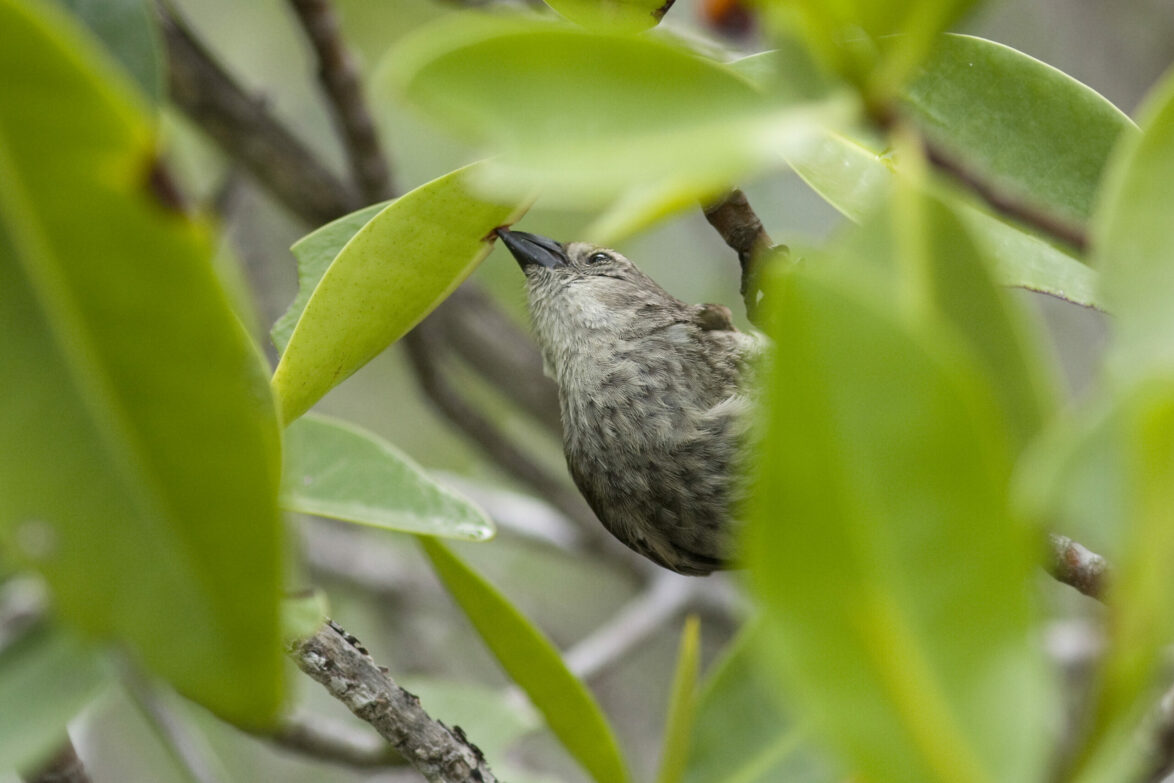
Although oceanic islands such as Galapagos tend to be home to an exceptionally large proportion of endemic species of flora and fauna, they are also low in species diversity...
1. Little vermilion flycatcher (Pyrocephalus nanus)
The little vermilion flycatcher is endemic to Galapagos, meaning that it is found nowhere else on Earth, though it is closely related to the vermilion flycatcher (Pyrocephalus obscurus) found in mainland North and South America. The males have a striking red plumage, while the females are harder to spot, with a drab greyish colour and peach-coloured breast. These beautiful little birds are much loved by both tourists and locals, and were once commonly seen all across the Archipelago, much like the robin in Europe. However, the little vermilion flycatcher is now extinct on Floreana island, close to extinction on Santa Cruz and under threat on Isabela.
Threats include the larvae of the invasive avian vampire fly (Philornis downsi), which feed on the young of many landbirds in Galapagos, killing them in the nest. They are also threatened by the spread of the invasive hill raspberry plant (Rubus niveus), which creates dense spiny thickets that prevent birds like little vermilion flycatchers from foraging for food. GCT is supporting the landbird conservation team at the Charles Darwin Foundation and the Galapagos National Park Directorate in their efforts to tackle these threats and save the little vermilion flycatcher from extinction.
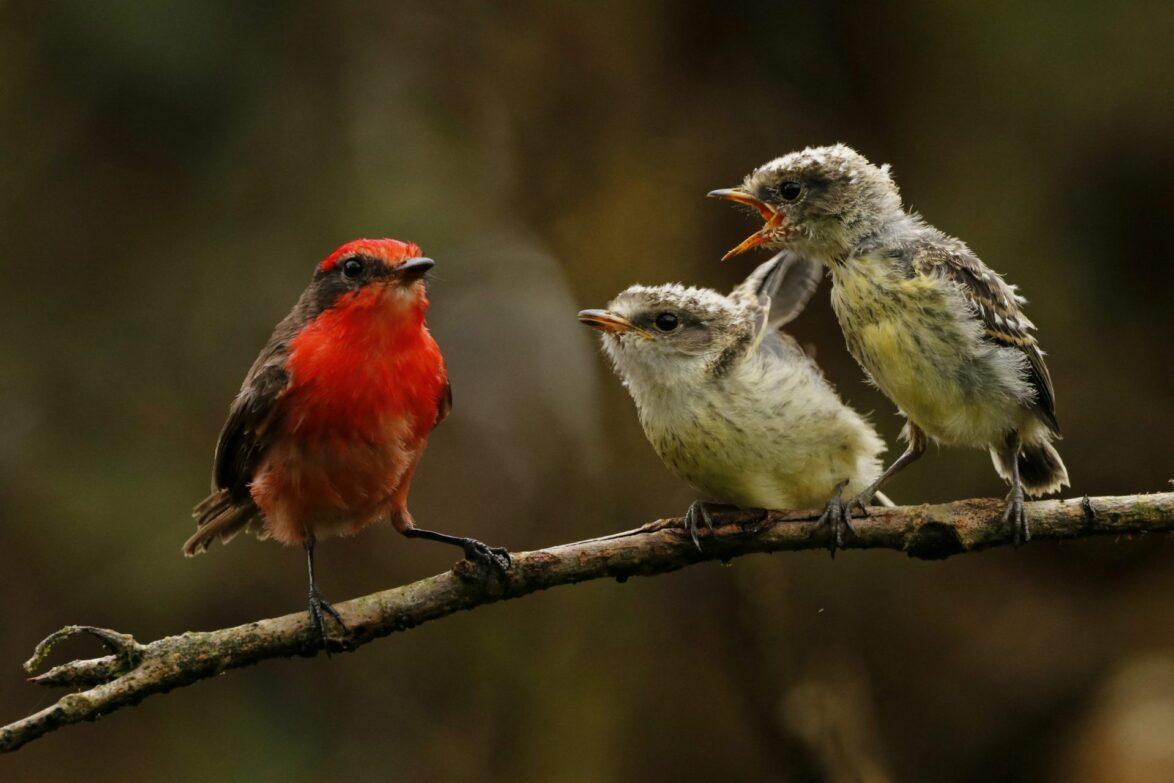
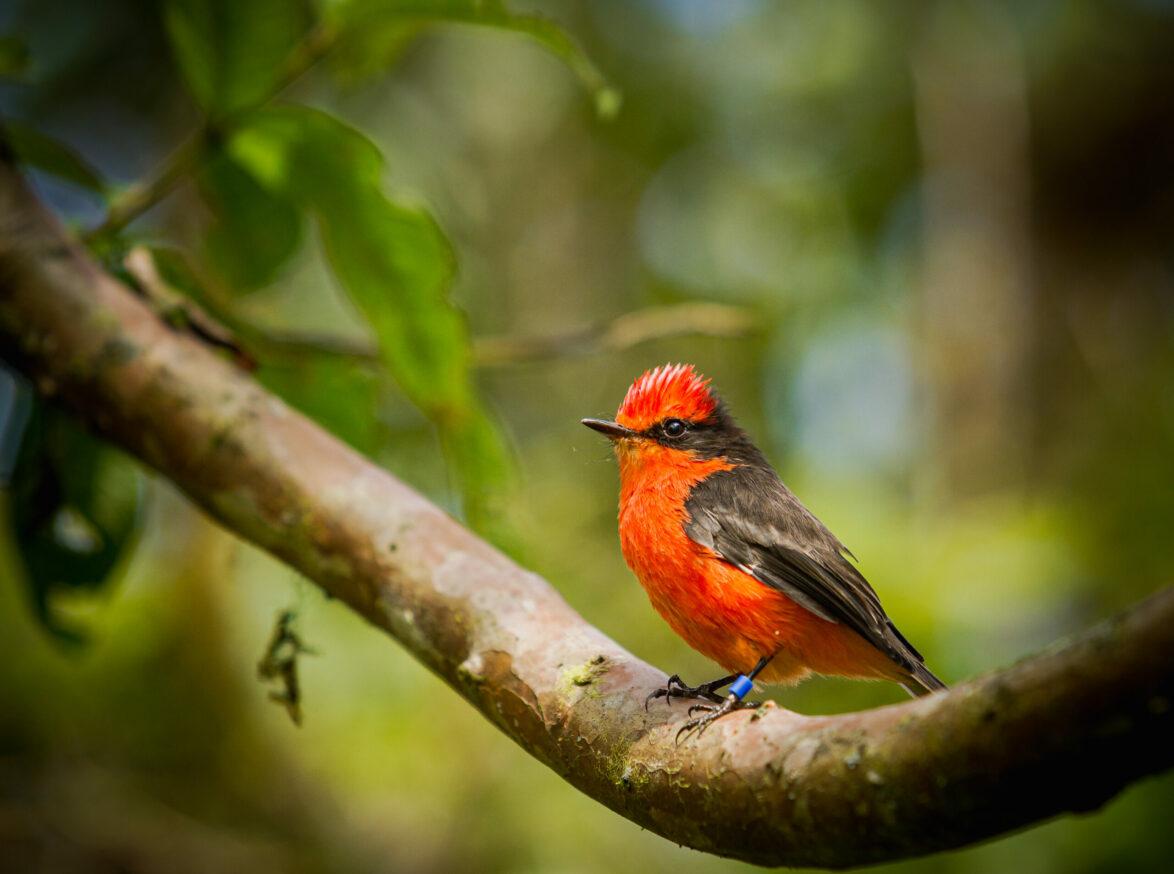
Red Alert for Galapagos
Support our Appeal and help us save the little vermilion flycatcher from extinction.
2. Yellow warbler (Setophaga petechia aureola)
The yellow warbler is a relative newcomer in Galapagos terms, having colonised the Archipelago less than 300,000 years ago. Bright yellow plumage makes these little birds easy to spot, and they are found across the Archipelago, from the coast all the way up into the highlands. The yellow warbler populations found in Galapagos and on Cocos Island, Costa Rica are considered a subspecies of Setophaga petechia, which is widespread across North America, the Caribbean and the northern part of South America. As with the little vermilion flycatcher, the yellow warbler is affected by the larvae of the avian vampire fly. Other threats to these birds in Galapagos include the smooth-billed ani, an invasive bird which robs eggs from their nests, and avian malaria, which has been introduced to the Archipelago by an invasive mosquito.
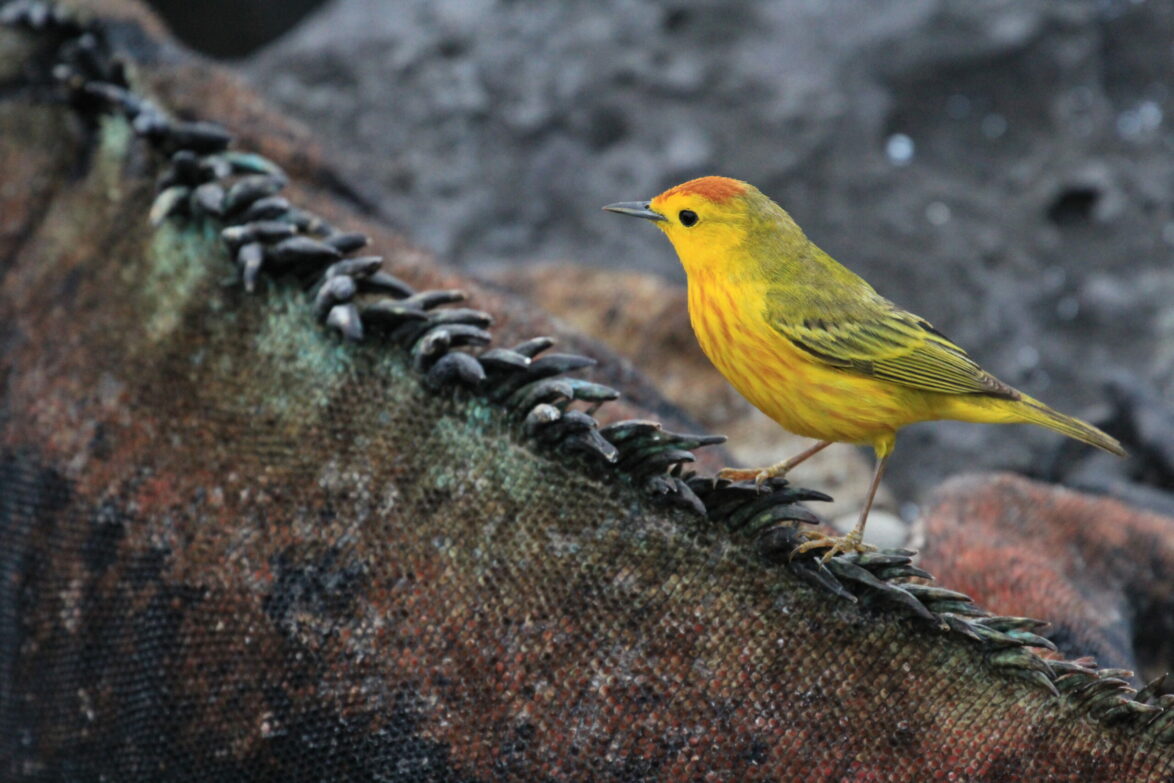
3. Blue-footed booby (Sula nebouxii)
The blue-footed booby is probably the best-known seabird species in Galapagos, although it is not endemic to the Archipelago, found in colonies from the Gulf of California all the way down the coasts of Central and South America as far as Peru. The name ‘booby’ comes from the Spanish word bobo meaning ‘foolish’ or ‘clown’, a reference to their slightly clumsy, comical way of moving on land. Boobies are extremely agile in the air, however, and hunt fish by plunging into the sea, wings folded back, hitting the water at speeds of up to 60mph. Their large blue feet play an important role in courtship, and females are believed to favour males with brighter feet. Sadly, blue-footed booby numbers in Galapagos have plummeted from a population of around 20,000 breeding birds in the 1960s to around 6,400 in 2012. This is believed to be linked to a decline in fish such as sardines. Blue-footed boobies may also be at risk from increasing marine plastic pollution.
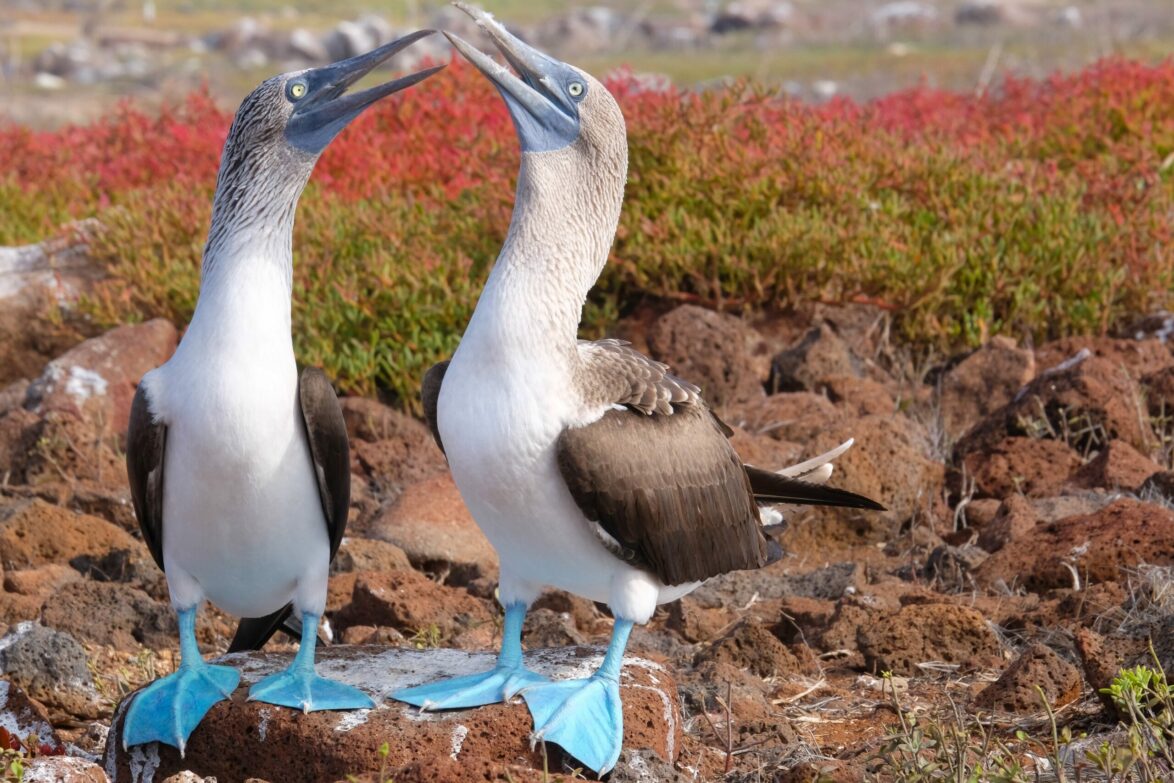

Why do boobies have blue feet?
It’s the characteristic that makes them so readily identifiable and has provided Sula nebouxii with its common name, but why does the blue-footed booby have blue feet?
4. Red-footed booby (Sula Sula)
Less well known than its blue-footed cousin, but arguably even more colourful, the red-footed booby is smaller, with distinctive red legs and feet, and a pale blue bill. They are also more widespread, found throughout the tropical and subtropical regions of the Atlantic, Pacific and Indian Oceans; in August 2023, a red-footed booby was even spotted off the coast of Cornwall! They face similar threats in Galapagos to blue-footed boobies, and sadly, a red-footed booby was amongst those birds found to have died from avian flu in Galapagos earlier this year, the first time that the virus has been recorded in the Archipelago.

5. American flamingo (Phoenicopterus ruber)
The American flamingo, also known as the Caribbean flamingo, is one of six flamingo species found around the world, and they breed in Galapagos, as well as across the Caribbean. These startlingly pink birds can be found in a number of brackish lagoons around the Archipelago, including on the populated islands of Floreana, Isabela and Santa Cruz. Their pink colouration is down to the carotenoid pigment that they ingest from their food – algae, crustaceans and microscopic plant materials – and the more pigment they consume, the more intense the shade of pink. Invasive species such as rats and feral pigs are a threat to flamingos, eating their eggs or even chicks. In 2022 it was reported that flamingos were breeding on the island of Rabida for the first time in more than 20 years, following the eradication of black and brown rats from the island in 2011.
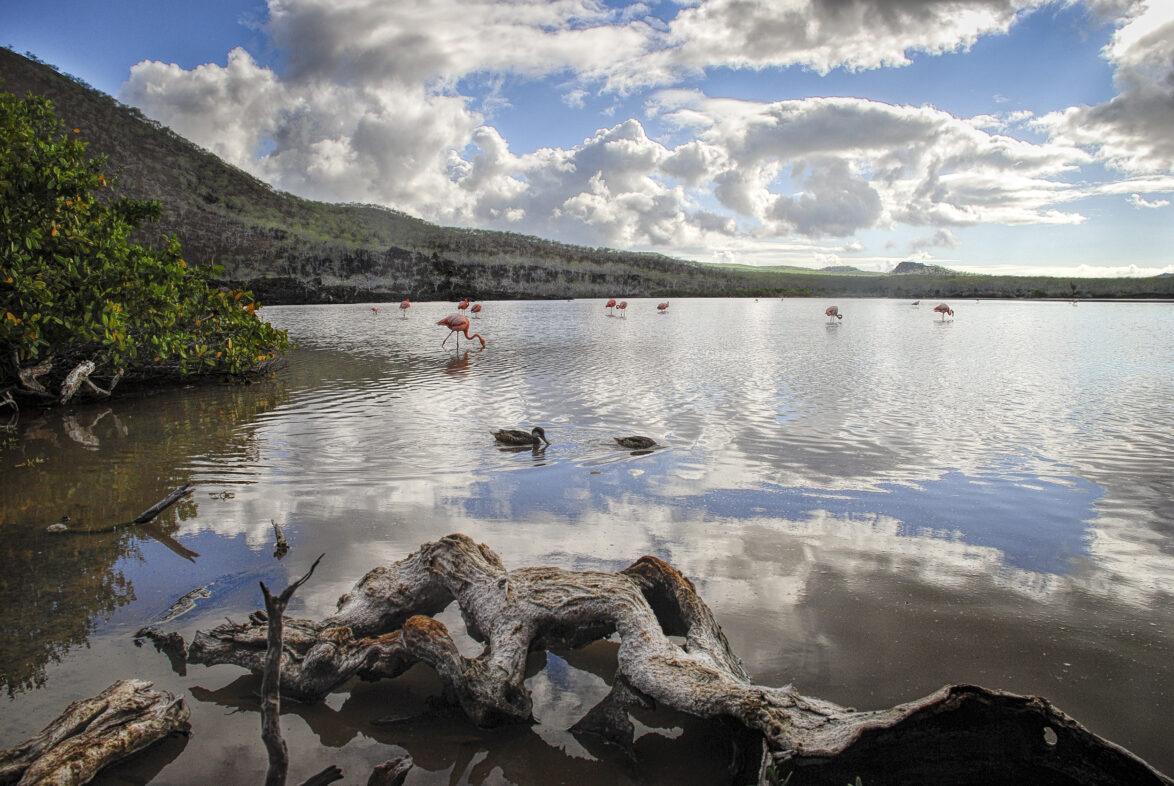
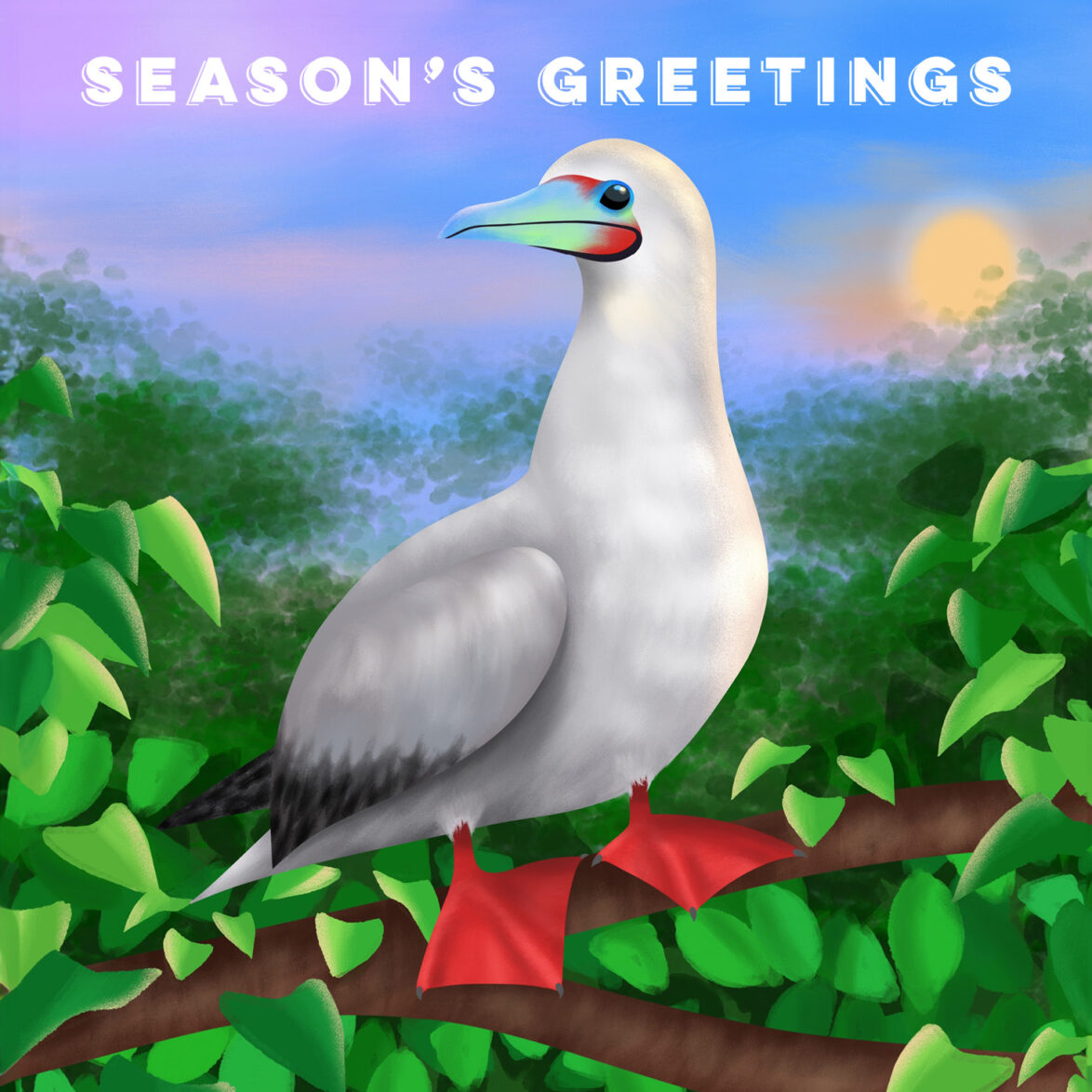
Red-footed booby Christmas cards
Our beautiful new Christmas card design features the colourful red-footed booby, one of the best known birds in Galapagos.
Related articles

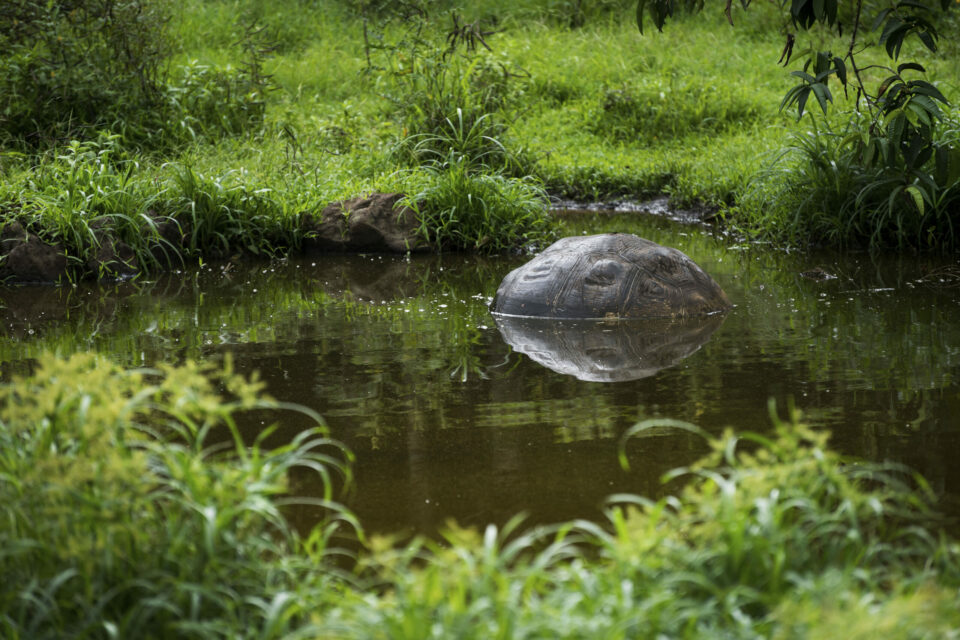
Double your donation to rewild Galapagos with the Big Give

Galapagos Day 2023: Rewilding Galapagos
